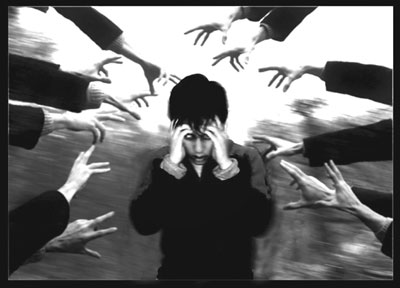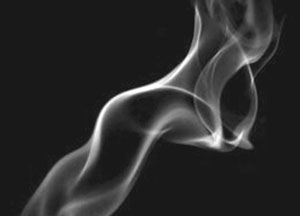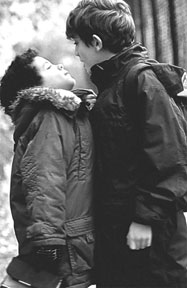|

Is schizophrenia a rare disorder?
by Harshani A. Pinnawala
Though many have heard the word ‘schizophrenia”, they may hardly have
any idea about this disorder. Yet, this does not mean that it is a rare
mental disorder. This mental disorder affects approximately one percent
of the population of the world. In America itself it has been already
affected two million people. Men are at high risk while comparing to
women.
Schizophrenia is also known as ‘split personality disorder’ where a
diagnosed person may suffer from hallucinations, delusions, distorted
thought or reduced ability to function in society. A schizophrenic
person is unable to keep a good communication with the human
environment.
 According to Diagnostic and Statistical Manual of Mental Disorders
(DSM), schizophrenia can be categorised into five subtypes.
“Undifferentiated type” is one of the most common mental disorders among
humans. An undifferentiated type patient will have a combination of all
the symptoms such as delusions, hallucinations, confusion, emotional
turmoil, excitement, dream-like autism, fear, disorder thoughts and
bizarre behaviour. Most often these symptoms can be seen in the patients
who are in the process of breaking down and becoming schizophrenic. But
at the same time he does not fit into any other type because of the
mixed symptoms. According to Diagnostic and Statistical Manual of Mental Disorders
(DSM), schizophrenia can be categorised into five subtypes.
“Undifferentiated type” is one of the most common mental disorders among
humans. An undifferentiated type patient will have a combination of all
the symptoms such as delusions, hallucinations, confusion, emotional
turmoil, excitement, dream-like autism, fear, disorder thoughts and
bizarre behaviour. Most often these symptoms can be seen in the patients
who are in the process of breaking down and becoming schizophrenic. But
at the same time he does not fit into any other type because of the
mixed symptoms.
A “catatonic type” patient may show a sudden loss of all animation
and a tendency to remain motionless for hours or even days in single
position. The patient may talk or shout incoherently, pace rapidly,
openly indulge in sexual activities, attempt self-mutilation or even
suicide, or impulsive attack and try to kill others. The suddenness and
extreme frenzy of these attacks make such patients dangerous to both
themselves and to others. Some of these patients are highly suggestible
and will automatically obey commands or imitate the actions of others or
mimic them. They pay no attention to outer world or the surroundings.
Their facial expressions are vacant and their skin appears waxy. If a
patient's arm is raised to an awkward and uncomfortable position he may
keep it for minutes or even hours.
Disorder
“Disorganised type” is also known as ‘hebephrenic’ schizophrenia
which is another type of schizophrenia. Though this type occurs at an
early age, this is not very common among people. A patient can have a
history of oddness, over scrupulousness about trivial things and
preoccupation with obscure religious and philosophical issues. As the
mental disorder progress, the patient becomes emotionally indifferent
and childish. The common symptoms can be a silly or weird smile and
inappropriate, shallow laughter after little or no provocation. the
speech becomes incoherent and may include baby talks, childish giggling,
and repetitious use of similar-sounding words. Their speech becomes
incomprehensible. Hallucinations are common among this type of patients.
The voices heard by these patients may accuse them in immoral
practices. Delusions might be of a sexual, religious or persecutory
nature and they might become unchangeable and fantastic. For example, a
woman might complain that she was being followed by enemies and she had
been killed a number of times. In addition, the patients might become
hostile and aggressive. The patients might exhibit bizarre behaviour in
the form of odd facial grimaces, talking and gesturing to themselves,
inexplicable laughter and weeping.
Paranoid Type is the most common type of schizophrenia. However, in
recent years the prevalence of this type has shown a substantial
decrease though the reasons are still unknown. Habitually, paranoid-type
schizophrenic patients show histories of increasing suspiciousness and
of severe difficulties in interpersonal relationships dominated by
absurd, illogical, and often changing delusions.
A patient may become highly suspicious of relatives or associates and
may complain of being watched followed, poisoned, talk about, or
influenced by various tormenting devices rigged up by ‘enemies'. The
patients are also exposed to themes of grandeur which are common in
paranoid-type delusions. For example, they may claim to be the world's
greatest philosopher or some well-known persons such as God. They may
hear singing, god speaking, the voices of their enemies and may see
angels or feel damaging rays piercing their bodies at various points.
In response to a command from a ‘voice’ a patient may commit violent
acts. These patients can sometime become hazardous, as when they attack
other people they are convinced have been persecuting them.
Episode
Residual type is the fifth officially recognised type schizophrenia.
These patients have experienced an episode of schizophrenia from which
they have recovered sufficiently, so as not to show well-known psychotic
symptoms. However, these patients manifest some mild signs of their past
disorder namely odd beliefs, flat affect, or eccentric behaviour.
Casual factors
There are several factors associated with the different types of
schizophrenia. A frequently asked question about the casual factors of
schizophrenia is, “is it hereditary?” it is necessary to mention that
schizophrenia is not directly passed from one generation to another
generation genetically. There is no single cause for this illness.
Despite various research in the medical field the underlying causal
factors of schizophrenias remain uncertain. However, researchers have
identified three key factors; biological, psychosocial and
socio-cultural factors.
Disorders of the schizophrenic type tend to ‘run in families’
increasing the notion of ‘tainted’ genes as an important casual factor.
The evidence for higher-than-expected rates of schizophrenia among
biological relatives of index cases is overwhelming. Those who have
close blood relatives with a history of schizophrenia have a high risk
of getting this disorder. Nevertheless, twin studies have shown a
different story which explains that if one identical twin has
schizophrenia, the risk of having the disorder for the other twin is 50
percent .
A few researchers have suggested that ‘shy gene’ leads to develop
social anxiety which has a connection with the schizophrenia.
Psychosocial and socio-cultural factors include everything such as
social, nutritional, hormonal and chemical environment, social dynamics
and stress a person experiences, use of drugs, education, virus
exposure, and usage of vitamin which facilitate to develop
schizophrenia.
Treatment
Schizophrenia is a life-long condition which can be treated but not
cured. Because of the complexity of this disease, treatment for
schizophrenic patients have changed noticeably in the mid 1950s.
However, schizophrenic patients highly depend on medications and on
psychosocial interventions. These can reduce the ‘positive’ symptoms of
schizophrenia. Unfortunately, there is no single approach for the
effectiveness of the patients.
These medications are highly expensive and have shown to induce
weight gain, rare but serious neurological disorders.
Psychotherapy is widely suggested, but due to lack of trained
therapists, this method is not being widely used. Psychotherapy is
basically used to establish the self-esteem, confidence and
self-dignity.
Electro convulsive therapy is the last line of treatment. This may be
prescribed in cases where other treatments have failed. With severe
episodes of schizophrenia, hospitalisation might arise. This can be
voluntary or involuntary depending on the condition of the patient.
However, recent research suggests that schizophrenia might be
prevented by taking care of certain precautions, especially, during
pregnancy period and as well as by early childhood, adolescent and adult
environments.
In addition, a person should reduce the consumption of alcohol and
other drugs to be away from this disorder.
Lessons for a lifetime
by Dr. W.B. Wijekoon
What a foreigner taught me
I was a young up-and-coming doctor in the nineteen sixties, driving a
brand new flashy Volkswagen Beetle car. I used to horn unnecessarily, as
those days I thought one has to run through this short life, until my
father advised me that this life is short, never run through it, always
walk.
 A foreigner was in the front car and behind I was tooting the horn to
overtake. A foreigner was in the front car and behind I was tooting the horn to
overtake.
He blocked me, got down, walked up to my car door and when I lowered
the shutter this is what he told me so very politely. “Young Man, do you
know that sound pollutes? And that you are polluting the environment
every time you toot that horn. Aren't you ashamed to pollute your
beautiful country?”
He walked back to his car and drove off.
From then up to date, I use the horn of my vehicle only in dire
emergencies. Most of the time never, so much so that last month I drove
to Kataragama and Yala with my nephew seated by me, having taken a bet
about non use of the horn and believe me I covered 750 kilometres up and
down without horning even once and I won the bet.
People in Singapore and UK hardly horn, they use the headlights to
overtake. Their ‘patience’ is unbelievable.
What the patient taught
I was a young consultant physician in 1965. My first appointment as
Consultant was in Matara General Hospital. One day I was doing the ward
round with all the Assistant Doctors, Interns, SHO, Registrars, Nurses
and Attendants. The whole lot following me. When I approached an
80-year-old patient, I asked him ‘Seeya, Diva daanda’ (‘Put the tongue
out’) He retorted, Sir, Pihiyak hari Katurak hari tiyenawada? (Do you
have a pair of scissors or a knife). Ay seeya, I asked in consternation
(why) Divak daanne kohomada Sir, kapanne natuwa? Sir min pasu kiyanna
Diva Dik karanna natnam Diva Pennanna. (Sir, hereafter tell “Show the
tongue or protrude it”). That was a wonderful lesson he taught me about
the proper use of the Sinhala language, especially by a southern man.
What the virus taught
This lesson was taught very recently. I am in my late seventies now
(The last chapter of life, 1-25 being the first chapter). I have always
been advising my patients in this last chapter, that even with minimum
feeling of ill-health and unfitness, never exert, but rest until you
feel perfectly fit, because invariably it is a virus that has entered
your system and producing this state of ‘ill health’ and we have no
known weapon (antibiotic) to destroy a virus up to date. On the other
hand, a bacterial infection can be easily tackled with antibiotics. In
the fourth and final chapter of Life the resistance drops drastically
and the only way to combat the virus invasion is to take adequate rest,
nutrition and pain killers in moderation.
I was feeling unwell with backache and feverishness, I swam 16
lengths at the SSC pool on Friday and on Saturday I washed my car and
mopped my bedroom. and on Sunday I did my usual five mile walk from 4.30
a.m. to 6 a.m. In my youthful days this was my therapy to “Chase the
virus away” and indeed it worked well! Those days. This time the virus
over-powered me and taught me a bitter lesson for the rest of my life.
My paper delivery man met me at 4.30 a.m. That Sunday and uttered
“Sir, ada bebali, bebali, purudu walk yanawa wage” (You are today
walking bubbling with life”). “Kata waha” - “Evil mouth” I pondered and
came back home and had the usual cold water bath, had breakfast and was
dressing up to proceed for work at the Central Hospital.
Lo and behold, I started shivering with high fever my tongue was
getting sucked in and I was virtually dying.
I got into the car and was driven by my son to the ICU there – on the
way I had to get down and vomit several times. As I entered the ICU, I
walked up to the bed there and the staff were smiling at me and I felt
much better and on my own I ordered an ECG to exclude a heart attack.
The ECG was absolutely normal. My temperature had risen to over 104
degrees C and blood count had dropped far below normal.Typical acute
viral invasion effects. I made my own diagnosis, asked for a glass of
water and in half an hour got myself driven back home.That was it – I
rested for about seven days and now I am back to normal.This is a lesson
to all people who read this - when you enter the last and penultimate
chapters of life, never exert when you feel unwell.
Rest adequately till you feel very well.
In rat model, ex-smokers remain quitters
A new inhibitor helps previously nicotine-addicted rats stay on the
wagon, according to a study published in the Journal of Experimental
Medicine. Kicking the cigarette habit is difficult enough, but resisting
the urge to light up in situations previously associated with smoking
can be a quitter's downfall.
 But help may be at hand. A new inhibitor developed by Fang Liu and
colleagues at the Centre for Addiction and Mental Health in Toronto
helped ex-smoker rats resist that urge. But help may be at hand. A new inhibitor developed by Fang Liu and
colleagues at the Centre for Addiction and Mental Health in Toronto
helped ex-smoker rats resist that urge.
Liu and colleagues found that long-term nicotine exposure caused two
neurotransmitter receptors to interact in the brain, and their inhibitor
prevented this interaction. In rats trained to self-administer nicotine,
the inhibitor had no effect on their propensity to indulge.
But in “ex-smoker” rats (those weaned off nicotine), the inhibitor
decreased the number of relapses after exposure to environmental cues
previously associated with a nicotine fix.
If the inhibitor works the same way in humans, it may provide a
powerful new way to reduce relapses in people who have quit smoking or
chewing tobacco.
- MNT
Bullying in childhood caused by children with mental health
disorders
Children diagnosed with mental health disorders were three times more
likely to be identified as bullies, according to new research.
Bullying is a form of youth violence defined as repetitive,
intentional aggression that involves a disparity of power between the
victim and perpetrator. A 2011 nationwide survey found 20 percent of
U.S. high school students were bullied during the preceding 12 months.
 And while it is well-established that victims of bullying are at
increased risk for mental health illness and suicide, few studies have
investigated the mental health status of those who do the bullying. And while it is well-established that victims of bullying are at
increased risk for mental health illness and suicide, few studies have
investigated the mental health status of those who do the bullying.
In the study, Association Between Mental Health Disorders and
Bullying in the United States Among Children Aged 6 to 17 Years,
researchers reviewed data provided by parents and guardians on mental
health and bullying in the 2007 National Survey of Children's Health,
which included nearly 64,000 children.
In 2007, 15.2 percent of U.S. children were identified as bullies by
a parent or guardian. Overall, children with mental health disorders
were three times more likely to bully other children. A sub-analysis by
type of mental health disorder found that children with a diagnosis of
depression were three times more likely to bully, while a diagnosis of
Oppositional Defiant Disorder (ODD)was associated with a six-fold
increase in the odds of being identified as a bully.
“These findings highlight the importance of providing psychological
support not only to victims of bullying, but to bullies as well,” said
study author Frances G. Turcotte-Benedict, a fellow at Hasbro Children's
Hospital in Providence, RI.”
“In order to create successful anti-bullying prevention and
intervention programs, there certainly is a need for more research to
understand the relationship more thoroughly, and especially, the risk
profile of childhood bullies.
- NYT
Chest band may relieve chronic cough
 A soft, extendible band fitted around the chest may help to relieve
cough in patients with persistent dry cough. A soft, extendible band fitted around the chest may help to relieve
cough in patients with persistent dry cough.
Over the course of one year, Japanese researchers evaluated the
antitussive effect of the chest band worn for eight hours a day in 56
patients with chronic cough due to a variety of conditions.
Results showed that 88 percent (n=49) of patients improved their
cough scores, and 59 percent (n=33) were able to reduce the cough.
Researchers conclude that soft chest band therapy for intractable,
prolonged, and chronic cough is a safe and effective therapy.
- MNT
|


